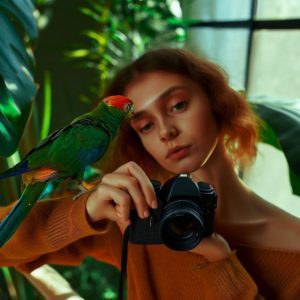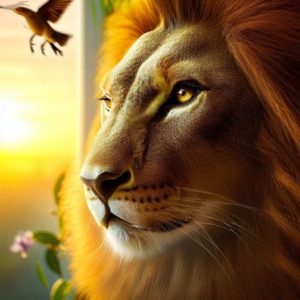The natural world is a vast tableau of life in all its glorious diversity, a vivid canvas showcasing nature’s infinite creativity. Each creature, each landscape, each moment holds a unique story waiting to be told. Wildlife photography is the art of narrating these stories, of capturing fleeting moments and transforming them into enduring symbols of nature’s beauty. But this art is not merely about taking pictures—it’s about observing, understanding, and appreciating the world around us. It’s about patience, resilience, respect, and an unquenchable curiosity about the natural world. This guide, crafted for both seasoned photographers and enthusiastic beginners, seeks to ignite your passion for wildlife photography and equip you with the knowledge and skills to embark on this exhilarating journey.
Section 2: Mastering the Art – Key Photography Techniques
Great wildlife photography is a blend of technical proficiency and artistic vision. It’s about understanding your equipment, knowing how to manipulate light and shadow, composition, depth of field, and so much more. But don’t be daunted. This section will break down these concepts into digestible chunks, guiding you from the realm of theory to the exciting world of practical application. By mastering these key photography techniques, you can take your wildlife photography to new heights.
Understanding Exposure: The Trinity of Aperture, Shutter Speed, and ISO
In photography, exposure is the amount of light that reaches your camera sensor. It’s a fundamental concept, affecting the brightness and mood of your images. Exposure is controlled by three elements: aperture, shutter speed, and ISO—often referred to as the “Exposure Triangle”.
Aperture is the size of the opening in your lens through which light enters, affecting depth of field. Shutter speed is the duration for which the camera shutter is open, allowing light onto the sensor, and controlling motion blur. ISO is the sensitivity of your camera’s sensor to light.
Mastering the interplay between these three elements allows you to control how your images are exposed, paving the way for creative experimentation.
The Art of Composition: Framing Your Subject
Composition is the arrangement of elements within a photograph. It’s a vital aspect of photography, shaping the story you want to tell through your image. The Rule of Thirds, one of the most well-known composition techniques, involves dividing your frame into a 3×3 grid and placing your subject along these lines or at their intersections. This creates balance and draws the viewer’s eye to your subject.
But remember, rules are made to be broken. There’s ample room for creativity in composition. You can use leading lines to direct the viewer’s attention, fill the frame for dramatic effect, or use negative space for a minimalist aesthetic. The key is to experiment and find your unique style.
Working with Light: The Golden Hours
In photography, light is your paintbrush. It illuminates your subject, creates shadows and highlights, and sets the mood of your image. And in wildlife photography, there’s no light more cherished than the golden hours—the first hour after sunrise and the last hour before sunset. During these times, the light is soft and warm, casting long shadows and enriching colors.
Learning to work with this magical light can transform your images. But also remember that every type of light, even harsh midday sun or the muted tones of an overcast day, can offer unique photographic opportunities.
Capturing Motion: Shutter Speed and Panning
Wildlife is dynamic, and often the most exciting moments are those filled with action. Mastering motion in photography allows you to freeze a bird in flight or convey the speed of a running gazelle. This is where shutter speed comes into play. A fast shutter speed can freeze motion, while a slower one can create a motion blur, giving a sense of movement.
Panning is another technique to capture motion. It involves moving your camera to follow your subject while using a slower shutter speed. The result is a subject in sharp focus against a blurred background, conveying a strong sense of speed and action.
Building Your Technical Toolbox
Mastering these key photography techniques equips you with a robust toolbox to approach wildlife photography. But remember, these tools are not prescriptive rules but guides to help you express your artistic vision. As you become more comfortable with them, don’t be afraid to experiment and break the norms. In the end, the most powerful images are often those that reflect your unique perspective and creativity.


